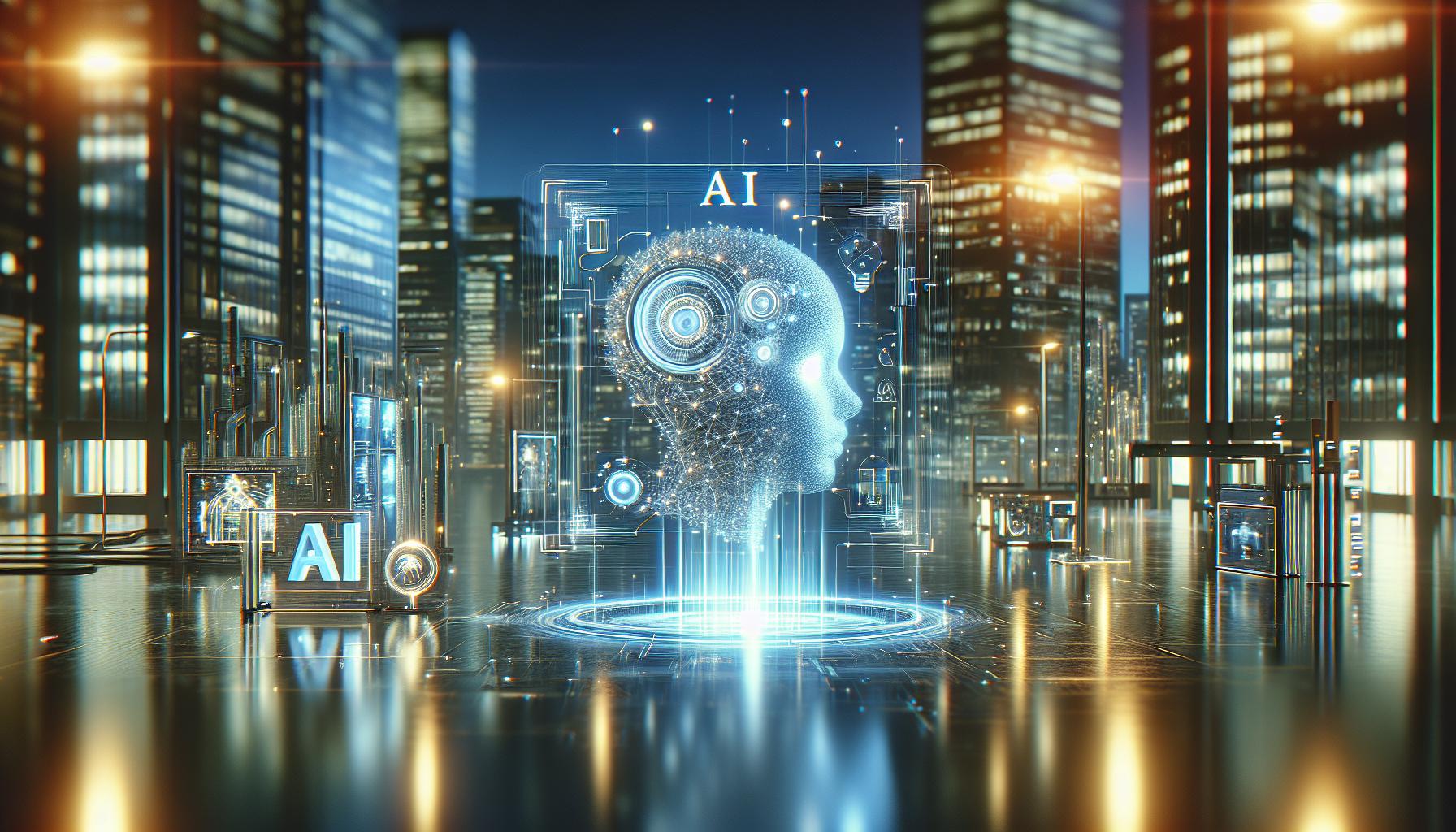As artificial intelligence revolutionizes image manipulation, the emergence of “nudify” services raises ethical concerns and personal safety issues. These tools, capable of transforming images into realistic nude versions, pose significant threats, notably to privacy and consent. understanding this technology is crucial as it intersects with critical discussions on digital rights and online security.
The Role of Machine Learning in Image Processing
The Impact of Machine Learning on Image Processing
In today’s digital age, where visual content dominates social media and marketing, machine learning plays a transformative role in image processing.Techniques powered by machine learning enable software to analyze, interpret, and enhance images in ways that mimic human perception. This capability extends far beyond mere edits; it encompasses everything from object recognition to automatic image tagging, bringing unprecedented efficiency and creativity to tasks that were once labor-intensive.
One of the most innovative applications can be seen in AI-driven tools like Nudify AI, which utilize complex algorithms to transform images seamlessly. These systems are designed to process images by identifying patterns, colors, and textures, making decisions based on vast datasets learned during training. For example, machine learning models can accurately detect and modify specific areas of an image while preserving the overall aesthetic quality, leading to enhancements that balance user intent with artistic integrity.
Key Techniques in Machine Learning for Image Processing
To harness the full potential of machine learning in image processing, several key techniques are employed:
- Convolutional Neural Networks (CNNs): These specialized neural networks excel in analyzing visual data, enabling functionalities like facial recognition and segmentation.
- Generative Adversarial Networks (GANs): GANs are used to generate new images by learning from existing ones,facilitating realistic transformations and style applications.
- Image Classification Algorithms: These algorithms label images based on content, essential for organizing images in large databases or social media platforms.
Each of these techniques contributes to creating more immersive and user-friendly experiences in applications similar to Nudify AI, which allows users to transform their images with just a few clicks, showcasing how machine learning simplifies complex image processing tasks.
Practical Applications and Future Prospects
The implications of machine learning in image processing extend into numerous sectors.As an example, in the fashion industry, AI tools are being utilized to present virtual try-ons for clothing.Similarly, in healthcare, machine learning assists in analyzing medical images, honing in on anomalies that a human eye might overlook. As technology advances, we can expect even more sophisticated applications, enhancing creative possibilities and streamlining workflows across different fields.
the marriage of machine learning and image processing not only broadens the scope of what is achievable with digital images but also sets the stage for future innovations that will continue to refine how we interact with visual content.Tools like Nudify AI exemplify this synergy, paving the way for a revolution in image conversion.
Ethical Considerations in AI-Driven Image Manipulation
A significant advancement in technology has made it possible for users to strip away clothing or manipulate images instantaneously. However, with the surge in popularity of AI-driven image manipulation tools like Nudify AI, ethical considerations are entering a vital conversation about consent, representation, and the implications of digital alterations.
Understanding Consent and Privacy
The core ethical concern revolves around consent. With AI tools capable of transforming images effortlessly, the potential for misuse is alarming. As an example,a user might upload someone else’s photo without permission,altering it in ways that could be harmful or degrading. In a world increasingly concerned with personal rights and privacy, it is indeed crucial for users to grasp the ethical bounds within which they operate:
- Respect Personal Boundaries: Always ensure that any image you manipulate belongs to you or is shared with consent.
- consider the Reception: Think about how the altered image could impact the individual depicted. Could it lead to harassment or unwanted attention?
- Openness is Key: If sharing manipulated images, openly disclose alterations to avoid misleading viewers.
The Role of Representation
AI image manipulation not only raises questions about individual rights but also about societal representation. The technology often reflects and reinforces existing biases, perpetuating unrealistic beauty standards.For example, widely circulated manipulated images can distort perceptions of body image, contributing to mental health issues like anxiety and depression.
To mitigate these impacts, developers and users of AI-driven tools like Nudify AI must strive for inclusive representations. This can involve:
- Promoting Diversity: Encourage representations of various body types, appearances, and backgrounds.
- Responsible Marketing: Avoid promoting manipulated images as an ideal; celebrate authenticity instead.
Legal Implications and Regulatory frameworks
The legal landscape surrounding image manipulation is still evolving, making it imperative for users to stay informed. Here’s a brief overview of potential legal issues:
| Legal aspect | Description |
|---|---|
| Copyright Infringement | Using someone’s image without permission could infringe upon their copyright. |
| Defamation | Manipulated images can be used to harm someone’s reputation, leading to potential lawsuits. |
| Privacy Violations | Sharing altered images without consent can lead to violations of privacy laws. |
Navigating the ethical minefield of AI-driven image manipulation requires a combination of conscientious behavior, awareness of legal implications, and a commitment to fostering positive representation in media. Only by actively considering these factors can users truly harness the power of technologies like Nudify AI while protecting the rights and dignity of individuals in the digital realm.
The User Experience: How Nudify AI Simplifies Image Transformation
Transforming Images with Ease
In today’s digital landscape, the ability to transform images quickly and efficiently is a game changer.Nudify AI harnesses cutting-edge technology to simplify the image transformation process, making it accessible to a broader audience.Whether for personal use, marketing, or artistic expression, the tool is designed to streamline what has traditionally been a complex and time-consuming task.
One of the standout features of Nudify AI is its intuitive user interface, which minimizes learning curves. Users can easily upload images and apply transformations with just a few clicks. The platform provides various options, allowing users to modify images based on their specific needs—be it enhancing creativity or meeting professional standards. This user-friendly approach aligns with core principles of effective user experience (UX), ensuring that users can achieve their desired results without feeling overwhelmed.
Real-World Applications and Practicality
The versatility of Nudify AI extends beyond mere transformations; it serves various industries and purposes:
- Marketing: Brands can quickly adapt visuals for campaigns, maintaining consistency across platforms.
- Social Media: Influencers and content creators can modify images to better fit their aesthetic and attract followers.
- Educational Use: Educators can employ image transformations in presentations, making lessons more engaging.
Along with flexibility, Nudify AI prioritizes speed and quality. Users can expect rapid processing times without sacrificing the fidelity of the transformed images.The technology employs advanced algorithms to ensure that images not only look good but also maintain their original essence, keeping the transformation meaningful and impactful.
Enhancing the User Experience
The effectiveness of Nudify AI is not solely based on its technical capabilities but also on its commitment to improving user experience.By implementing user feedback and continuous improvements, Nudify AI evolves to meet the changing needs of its audience. The platform’s emphasis on accessibility ensures that both novice and experienced users can achieve professional results.
Nudify AI exemplifies the intersection of advanced technology and user-centric design, allowing for seamless image transformations that cater to a wide range of applications. by simplifying the process and enhancing the overall experience, it stands out as a vital tool in the realm of digital content creation.
Navigating Privacy Concerns with AI Image Technology
It’s no secret that advancements in artificial intelligence are reshaping countless industries, but the implications they carry, particularly concerning privacy, are profound. As tools like Nudify AI allow for the transformation of images with remarkable precision, they also raise significant concerns regarding consent and personal privacy. Understanding how to navigate these privacy issues is essential for both users and developers in this evolving landscape.
Understanding the Risks
AI image processing technologies,including those developed for nudification or transformation,have inherent privacy risks. These tools can manipulate images in ways that may not respect the original subject’s privacy,especially when personal photos are involved. Here are some key risks associated with AI image technology:
- Lack of Consent: Users may unwittingly upload images of others, leading to unauthorized alterations without their consent.
- Data Breaches: Image data processed by AI systems can be vulnerable to breaches, exposing personal images and sensitive data.
- Misrepresentation: Altered images can lead to the spread of misinformation or contribute to harmful stereotypes.
Understanding these risks is crucial for both creators of AI technology and consumers engaging with these services. Implementing strict usage policies and obtaining explicit consent are essential steps in protecting individual privacy.
Best Practices for Protecting Privacy
To mitigate potential privacy concerns while using or developing AI image transformation technology,consider the following best practices:
- Implement Robust Consent Mechanisms: Ensure that users are fully informed about how their images will be used and obtain explicit permission.
- Use End-to-End Encryption: Protect images during transmission and processing to minimize the risk of unauthorized access.
- Provide Transparent User Control: Allow users to easily manage their data,including the ability to delete their images from the system at any point.
These measures not only protect users but also enhance the credibility of the technology,building trust between developers and consumers.
Real-World Examples and legislative Responses
Multiple jurisdictions are beginning to adapt their privacy laws to address concerns brought forth by AI technologies. For instance, the European Union’s General Data Protection Regulation (GDPR) has strict guidelines on data protection that can be applied to AI technologies, including image manipulation services like Nudify AI.
| Region | Privacy Legislation | Description |
|---|---|---|
| European Union | GDPR | Regulates the processing of personal data and requires explicit consent for using images. |
| California, USA | CCPA | Empowers consumers with rights over their personal data, including the right to know how images are used. |
| Canada | PIPEDA | Requires consent and transparency in the collection and use of personal information, applicable to AI technologies. |
By being aware of these evolving regulations, developers of AI technologies can better align their practices to meet legal standards while keeping user privacy at the forefront. Embracing a culture of responsibility not only enhances public safety but also informs the development of innovative solutions like nudify AI with a strong ethical foundation.
Future Trends: What Lies Ahead for AI in Image Transformation
Advancements on the horizon
As technology continues to evolve at an unprecedented pace, the world of image transformation is poised for monumental shifts. One area of notable growth is machine learning algorithms,which have drastically improved in their capacity to analyze and recreate high-quality images. In the context of Nudify AI and similar technologies, we can expect advancements that not only enhance image quality but also expand creative possibilities. for instance, future iterations may incorporate generative adversarial networks (GANs) that allow artists and designers to manipulate and transform images in more nuanced ways, achieving realism that blends seamlessly with artistic intent.
Ethical Considerations and Regulations
Alongside technological advancements, the dialog around ethical use will become more prevalent.As Nudify AI and similar tools become more accessible, the responsibility of users in the digital age has never been greater. The evolution of image transformation technologies will likely come with clearer policies and guidelines to combat misuse. Industry stakeholders may form coalitions to establish standards that prioritize consent and authenticity, ensuring the technology evolves within a framework that respects individual rights and societal norms.Anticipated regulations may govern how these tools are marketed, ensuring transparency in their capabilities and implications.
Applications Beyond Aesthetics
The future of image transformation will not solely reside in the realm of aesthetics but will extend into various industries. Consider the following potential applications:
- Fashion: Virtual fitting rooms using Nudify AI could redefine online shopping experiences, offering consumers immersive ways to visualize clothing on different body types.
- Healthcare: Image transformation could enhance medical imaging, improving diagnostics with clearer visual representations of scans and X-rays.
- Education: Interactive learning tools could leverage these technologies to create engaging visual content that aids in the comprehension of complex topics.
These applications highlight how companies can leverage Nudify AI technology to enhance user experiences across multiple sectors, promising an era where personalized content becomes the standard in digital interactions.
Table: Emerging Trends in Image Transformation
| Trend | Description | Impact |
|---|---|---|
| Automation | Increased use of AI to automate editing processes | Time-saving and cost-effective solutions for creators |
| Real-Time Processing | Advancements in speed allowing for immediate transformations | Enhanced user engagement and interactivity in applications |
| Augmented Reality (AR) | Integration with AR for immersive experiences | New ways for users to interact with and experience content |
The landscape of image transformation is rapidly changing, and as the technology behind Nudify AI continues to mature, it promises not only stunning visual effects but also practical applications that can revolutionize how we interact with the digital world. By staying informed about these trends, users and developers alike can navigate the future with a keen awareness of the opportunities and responsibilities that lie ahead.
Demystifying Technical Jargon: key Terms in Image AI Explained
Did you know that the field of image AI incorporates a host of technical terms that can frequently enough feel overwhelming? Understanding these terms is crucial for anyone looking to grasp the functionalities behind innovative technologies like Nudify AI, which plays a pivotal role in image transformation.
Essential Terms in Image AI
To navigate the complexities of image manipulation, familiarizing yourself with key terminology can enhance your comprehension and request of these tools. Here’s a breakdown of some fundamental concepts you might encounter:
- Machine Learning (ML): A subset of AI that enables systems to learn from data and improve their performance over time without explicit programming.In the context of Nudify AI, ML algorithms analyze vast datasets of images to understand what transformations to apply.
- Neural Networks: Inspired by the human brain, these are computational models designed to recognize patterns. They are essential for processing and generating images in a way that preserves essential details during transformation.
- Convolutional Neural Networks (CNNs): A specific type of neural network particularly effective in image processing tasks. CNNs are pivotal in Nudify AI for analyzing and transforming visual content.
- Data Augmentation: Techniques used to modify existing images in various ways to create new training examples. This practice boosts the diversity of data available for training models, improving the system’s effectiveness in transforming images.
- Generative Adversarial Networks (GANs): A pair of neural networks that work against each other; one generates new images while the other evaluates them.This technology is frequently enough employed in enhancing image quality and variability for applications like Nudify AI.
Understanding Image Transformation
When discussing technologies like Nudify AI, it’s essential to demystify image transformation. this process involves several key steps:
| Step | Description |
|---|---|
| Input | The original image that serves as the basis for transformation. |
| Processing | Algorithms analyze the input image, determining how to manipulate it while preserving details. |
| Output | The transformed image, which reflects enhancements or alterations based on the analysis. |
Applying Your Knowledge
Grasping the terminology around Nudify AI and image transformation can empower users to leverage these technologies effectively. Whether you’re in creative fields, digital marketing, or app development, understanding terms like neural networks and data augmentation provides a foundation for utilizing image AI solutions confidently. For practical application, consider experimenting with image editing tools that incorporate these technologies to see firsthand how they reshape visual content.
To Conclude
the exploration of nudify AI technologies reveals a captivating interface between advanced artificial intelligence and image manipulation. This technology harnesses deep learning algorithms to analyze and reconstruct images, facilitating transformations that can either enhance creativity or provoke ethical discussions. Tools like Nudify-AI and Unclothy illustrate the potential and versatility of AI in image processing, enabling users to seamlessly engage with complex features designed for precision and user satisfaction [[1]](https://nudify-ai.co/) [[2]](https://awesomeaitools.com/ai-tools/unclothy). However,as the capabilities of such technologies expand,so too do the conversations surrounding their implications,particularly regarding privacy and consent [[3]](https://katu.com/news/nation-world/states-consider-blocking-nudify-apps-that-use-ai-to-make-explicit-images-without-consent).
As we move forward, it is indeed crucial to balance innovation with ethical considerations, ensuring that the use of AI in image transformation is both responsible and respectful. We encourage readers to delve deeper into this topic, examining not just the technology itself but also the broader societal impacts it may usher in. Engaging with these discussions will foster a more nuanced understanding of AI’s dual role as a tool for creativity and a catalyst for ethical reflection.









